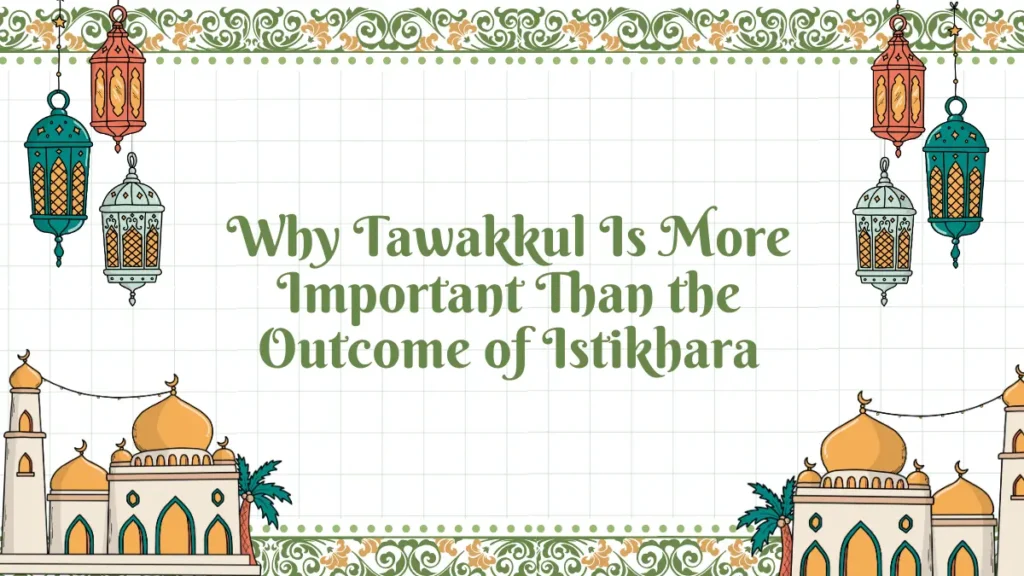Introduction
As the Hajj pilgrimage nears its completion, the air fills with a sense of devotion and fulfillment. Among the most important rituals during the final days are Tawaf al-Ifadah and Tawaf al-Wada, which pilgrims perform to complete their spiritual journey. These rituals represent physical acts of worship and symbolize the completion and renewal of our faith.
Tawaf al Ifadah is an important part of the Hajj pilgrimage and is considered one of its pillars. After completing this ritual, the pilgrims perform Tawaf al-Wada, the Farewell Tawaf. This ritual bids a moving farewell to the Kaaba, and pilgrims fill the final circumambulation with deep emotions and hopeful peace as a bittersweet moment.
To explore a comprehensive guide on performing Tawaf, covering its various types and common rulings, visit our blog post titled Tawaf in Hajj and Umrah: Significance and Method.
Now, we will discuss the method, rules, and necessity of Tawaf al-Ifadah and Tawaf al-Wada, the concluding rituals of Hajj.
Tawaf al-Ifadah: Circumambulation of Completion
Tawaf al Ifadah, also known as Tawaf al-Ziyarah, is an Islamic ritual performed during the Hajj pilgrimage. The Tawaf translates to “circumambulation”, and Ifadah means “pouring forth” or “arrival.” It signifies the completion of the Hajj, performed after we return from Mina, following the standing at Arafat, spending the night in Mazdalifah, and the stoning of the Jamarat. During Tawaf al-Ifadah, pilgrims circumambulate the Kaaba seven times in a counterclockwise direction upon arrival in Mecca. This is considered one of the essential pillars of the Hajj.
Upon completing tawaf ifadah on the 10th day of Dhul Hijjah, most Ihram restrictions are lifted. Pilgrims can now engage in activities like wearing normal clothes and having marital relations (if applicable).
For more information about Ihram, visit our blog post, Entering the State of Ihram for Hajj and Umrah.
Planning your entire pilgrimage journey in advance is essential, and some of the best travel companies can handle the arrangements for you, ensuring a smooth and worry-free experience. Explore reliable Umrah and Hajj packages to simplify your travel.
Rulings on Tawaf al-Ifadah
Tawaf ifadah rulings are crucial for the pilgrimage to be performed accurately and in line with Islamic teachings. There are also general rules for performing Tawaf, including conditions related to Wudu, purity, and Ihram that should be observed by pilgrims. Following these general guidelines, there are specific rules for Tawaf al Ifadah that must be adhered to during Hajj to ensure the ritual’s correctness.
Time for Tawaf al-Ifadah
- Specific Window: There’s no specific date or time mandated for Tawaf al Ifadah. However, it must be performed after completing the other essential Hajj rites, like standing on Arafah, throwing stones at Jamarat, and animal sacrifice on the Day of Sacrifice (Eid al-Adha) or the following days of Tashreeq.
- Before Departure: Ideally, pilgrims should perform Tawaf al-Ifadah before departing from Mecca. However, some scholars allow delaying it until just before leaving, as long as they perform it before leaving the Ihram state.
In Case of Missing
- Unintentional: If a pilgrim misses Tawaf al-Ifadah unintentionally due to factors beyond their control (like illness), they must offer a sacrifice (dam) to compensate. The type of sacrifice varies depending on the specific situation. Consulting an Imam or scholar for guidance is recommended.
- Intentional: Missing Tawaf ifadah intentionally without a valid reason makes the Hajj invalid. The pilgrim would need to repeat the entire Hajj pilgrimage later.
Rulings of Tawaf al-Ifadah for Menstruating Women
Women who are menstruating are not allowed to perform Tawaf al Ifadah. They should wait until they become ritually pure to do so. There is no penalty for repeating any rite if menstruation occurs before Tawaf al ifada.
Narrated by Hazrat Abbas (RA):
The people were ordered to perform the Tawaf of the Kaba (Tawaf-al-Wada`) as the lastly thing, before leaving (Mecca), except the menstruating women who were excused.
(Sahih al-Bukhari 1755)
To fulfill the requirements of the Hajj pilgrimage, pilgrims must be aware of and follow these rulings carefully.
Tawaf al-Wada: Alvida Tawaf
Tawaf al Wada, also known as the Farewell Tawaf or Alvida Tawaf, is performed by pilgrims as a final act of devotion and farewell to the Kaaba before leaving Mecca. It’s a symbolic expression of bidding farewell to the sacred city and the House of Allah (SWT), expressing gratitude for the opportunity to perform the pilgrimage, and seeking blessings for the journey ahead. This circumambulation is often filled with gratitude, hope, and possibly a touch of sadness at leaving.
If you want to learn more about the history and construction of the Kaaba, click on the link: The Kaaba: History and Significance in Islam.
Tawaf al-Wida should be performed before leaving Mecca, preferably on the day of departure. However, there’s some flexibility in timing depending on individual circumstances. While some scholars consider it obligatory (wajib) for every pilgrim to perform Tawaf al-Wada before leaving Mecca, others think it is highly recommended (mustahabb). The majority opinion leans towards considering it highly recommended rather than obligatory. Menstruating women are not liable to perform Tawaf al-Wada.
Combining Tawaf al-Ifadah and Tawaf al-Wada
In Islamic jurisprudence, some scholars, particularly from the Maliki and Hanbali schools of thought, permit combining Tawaf al-Ifadah with Tawaf al Wida under certain circumstances. Sheikh Abdul-Aziz ibn Baz, Mufti of Saudi Arabia, stated that if a pilgrim delays tawaf ifadah and performs it after completing all other Hajj rituals, it also suffices for Tawaf al Wada. This can be particularly relevant for pilgrims with limited time who must depart shortly after completing the rituals at Jamarat. It allows them to perform one less circumambulation.
It’s important to note that combining the Tawaf isn’t the preferred approach for all scholars. Tawaf al-Ifadah remains a pillar of Hajj, and pilgrims should prioritise performing it separately to acknowledge its significance. However, if combining is necessary, the following steps can be followed:
The steps for combining the Tawaf al Ifadah and Tawaf al-Wada are as follows:
- After completing the Hajj rituals, the pilgrim performs Tawaf al-Ifadah.
- Upon completion, the pilgrim should make the intention that this Tawaf will also serve as Tawaf al-Wada.
- This combined Tawaf is then followed by two Rakats behind Maqam Ibrahim, Sa’ee between the hills of Safa and Marwa, and drinking water from the well of Zamzam.
It is important to note that all four schools of Islamic jurisprudence agree on the validity of combining these Tawafs when performed within the days of Dhul-Hijjah.
Common Queries
Q1. Is Tawaf al-Wada necessary after Umrah?
Tawaf al-Wida is not obligatory after performing Umrah. However, it is a required ritual for those who have performed Hajj before leaving Mecca. It’s recommended that pilgrims performing Umrah perform a circumambulation of the Kaaba just before leaving Mecca. This isn’t Tawaf al-Wada but a way to show respect and gratitude before departing the holy city.
To learn more about how to perform Umrah, click on the link: What is Umrah?
Q2. Does Tawaf al-Wada require Sai (the ritual walk between Safa and Marwah)?
The Tawaf al-Wida is a way pilgrims say farewell to the Kaaba at the end of their pilgrimage. Regarding Sai, it is not a requirement for Tawaf al-Wada. Sai is performed after the Tawaf al-Qudum and is an integral part of Hajj and Umrah rituals. Therefore, if someone has already performed Sai during the initial stages, they cannot do it after Tawaf al Wida.
For more information, visit our blog Sa’ee Between Safa and Marwah: A Pillar of Hajj and Umrah.
Q3. When is tawaf al-Ifadah performed?
Tawaf al-Ifadah is performed after completing core Hajj rituals like standing on Arafah and throwing stones at Jamarat. Ideally, pilgrims perform it before departing Mecca.
Q4. When should Tawaf al-Ifadah be performed?
Tawaf al-Ifadah is performed after the standing at Arafah, on the 10th of Dhul Hijjah or the days following. It is one of the essential rites of Hajj and should be completed before leaving Mecca.
Q5. Is Tawaf al-Wada required for Umrah?
No, Tawaf al-Wada is specific to Hajj and is not obligatory for Umrah.
Q6. How many circuits are performed in Tawaf al-Wada?
Tawaf al-Wada consists of seven anticlockwise circuits around the Kaaba, similar to other Tawaf rituals.
Q7. Is there a specific supplication for Tawaf al-Wada?
There is no prescribed supplication; pilgrims may recite any prayers or supplications during Tawaf al-Wada.
Conclusion
Tawaf al-Ifadah and Tawaf al-Wada are crucial for concluding the Hajj pilgrimage. As pilgrims perform these final rituals, it is important to approach them with great respect and a sense of achievement. Understanding the spiritual meaning of these acts of devotion is essential.
For specific guidance on these rituals or any aspect of the pilgrimage, it’s highly recommended to consult a trusted Islamic scholar. Their expertise and insight can clarify and ensure that the rites follow Islamic principles and teachings, improving the spiritual experience of the pilgrimage journey.
Planning your pilgrimage and looking for complete guidance on the Hajj or Umrah? Look no further! Our Hajj and Umrah category is your ultimate destination for all things pilgrimage-related. Discover the deep history of these sacred journeys and prepare yourself with practical guides on performing rituals perfectly. Enhance your spiritual experience with essential duas.











